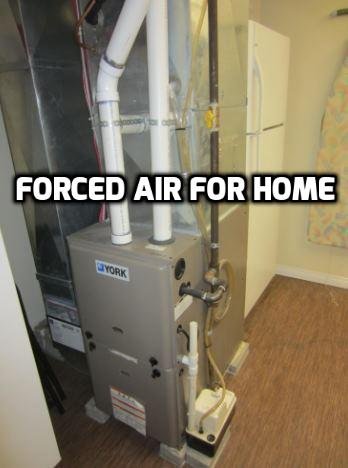Living in a four-season or cold country, you might wonder about heat pumps vs. forced air. Are they actually the same? Are they different? Or are they part of each other? These questions might have crossed your mind—no need to worry anymore.
In this article, you will find a discussion about heat pumps and furnaces. You need to know the heating and cooling system and how it works to decide which heating system is more energy efficient.
This way, you can choose which is better for you, especially when looking to heat your home in cold climates or cool your home during warmer seasons.
Heat Pump
A heat pump system is a machine that transfers heat from a cool air area to a warmer area, effectively using the principle to move heat rather than burn fuel to generate heat. You can imagine how the machine works. To put it simply, it removes heat from the outdoor unit and transfers the heat into your house.
This process is called a healing process. This heating process is the same thing as how the air conditioner and refrigerator work.

The only difference is that a heat pump runs in reverse. The simpler definition is that a heat pump is an air conditioner running in a reverse valve. Thus, you should heat your house instead of cooling it. All heat pumps are also air conditioners, but not all air conditioners are heat pumps, although they are the same thing from an engineering perspective.
It is because of the manufacturer’s preference whether to make the heat pump valve in the air conditioner they made or not. An air conditioner is a heat pump that specializes in hot weather. If an air conditioner has a reversing valve, which can be a heater, the unit is referred to as a ‘heat pump.’
Heat pumps are especially suitable for moderate climates, where the temperature does not frequently drop to extreme lows. This is because heat pumps are more energy-efficient in these conditions, extracting or dissipating heat to either heat or cool your home.
Forced Air Heating System
Forced air or forced air heating system is a central heating method that distributes heat throughout your house using air to carry the heat. In this system, it travels the heated air through a duct system, and the heat is expelled through vents to different rooms and areas of your room to maintain a particular temperature.

You can set the temperature all the way you want. When the desired temperature is reached, the heat will shut off until the temperature drops. You can imagine it like the way an ironworks. An iron will stop heating if the maximum temperature is reached and start heating again when the temperature drops.
The difference is that you can set the temperature of the forced air heating system as you like. There are many types of equipment which heats the air. There is a gas furnace, an electric furnace, or a hydronic coil. Forced air heating is made to work together with a central air conditioning system. By doing this, you can control the temperature in your house both in a warmer season or cool season.
Read also: Gas Furnace Vent Pipe Code
To summarize, understanding the differences between a heat pump system and a forced air heating system is crucial for homeowners looking to find the most efficient and suitable way to manage their home’s temperature.
Whether you live in a region with moderate climates or face the challenges of cold climates, there’s an option tailored to your needs. By considering the pros and cons of each system, you can make an informed decision that ensures comfort in your home throughout the year.
The forced-air heating system distributes the heat while the central conditioning system cools the air. The combination of them is just like the heat pump, which can control your house’s temperature. No more confusion about heat pump vs. forced air, right?


